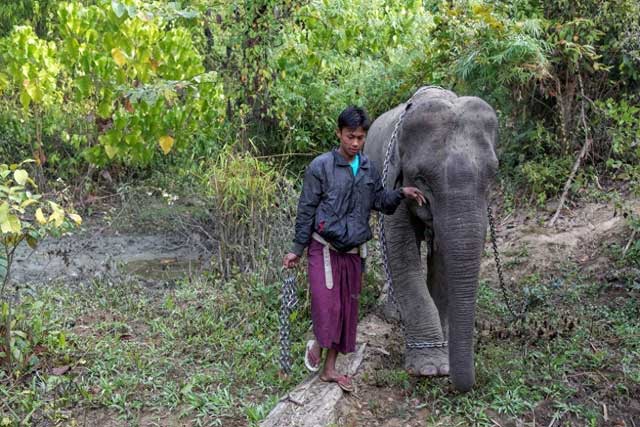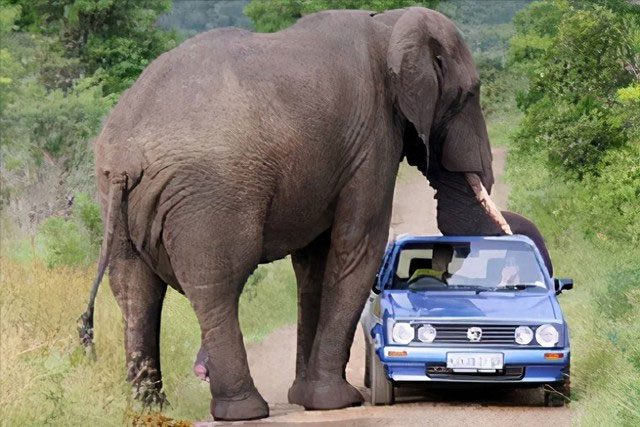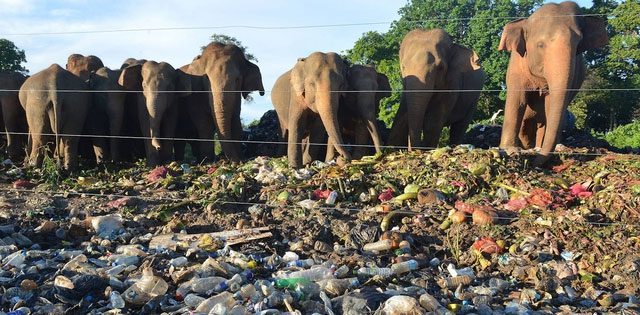As the largest land mammal in the world, elephants possess the biggest brain and temporal lobes among all terrestrial animals. One of the functions of the temporal lobe is to convert short-term information into long-term memory.
For instance, elephants can easily recall the locations where they fed and drank at a specific time, even decades later. Furthermore, companions they encountered can still be recognized after decades apart.

Due to human development, Asian elephants are increasingly losing their natural habitats, forcing them to venture closer to human settlements in search of food and water. This has led to an increase in conflicts between elephants and humans.
For example, in 1999, at an elephant sanctuary in Tennessee, an Asian elephant named Jenny encountered a new elephant, Shirley. The two elephants were visibly excited, trumpeting, stomping, and touching each other with their trunks. The sanctuary staff felt as though they were friends who had previously known each other.
And indeed, they were. The caretakers later discovered that Jenny and Shirley had known each other in a previous circus, despite only being together for a few weeks 25 years earlier.
However, this remarkable memory also means they retain both joyful and painful memories.
Many conflicts between humans and elephants in Xishuangbanna, Yunnan Province, China, over the past few decades stem from those painful memories.
On September 23, 2007, in the Xishuangbanna Dai Autonomous Prefecture, an injured female elephant damaged crops and attacked passersby.
On October 30, 2012, a woman was attacked and killed by an Asian elephant in Jinghong City, Yunnan Province.
In 2016, Asian elephants trampled three people in Menghai County, Yunnan.
In December 2017, a violent attack on a motor vehicle occurred in Xishuangbanna. The perpetrator, an Asian elephant, once again charged several vehicles on the highway, a species that is protected at the national level in China.

Elephants are herbivores and require a massive amount of food each day. When food is scarce, elephants may raid human crops for sustenance, leading to damage to harvests and property. Humans employ various barriers and traps to protect their crops and livestock from elephants. However, these barriers and traps can sometimes injure or kill elephants, resulting in anger and retaliation from the herd.
In the impression of many, Asian elephants are very gentle and honest, so why do they pose problems for humans? In fact, this animosity between humans and elephants has existed for centuries.
In the 1950s and 1960s, Asian elephants lived in sparsely populated areas. At that time, humans rarely interacted with them. Occasionally, an Asian elephant would wander into human-occupied areas, and due to their gentle and docile appearance, people sometimes fed them. This way, humans and Asian elephants experienced their first peaceful days together.
In the 1980s and 1990s, China’s population entered a period of rapid growth, leading to urbanization and agricultural expansion that encroached on the elephants’ original habitats.

Elephants are social animals and live in herds. However, some elephants may become separated from the herd due to old age, injury, or conflicts with humans. These solitary elephants are more likely to become aggressive and attack humans.
With their habitats compressed, Asian elephants must leave their original territories in search of food. They soon discover that the large amounts of crops cultivated by humans nearby are the highest quality delicacies.
Although Asian elephants have a higher IQ compared to other animals, no matter how intelligent they are, they cannot understand that food cultivated by humans cannot be taken at will.
And they have consumed a significant amount of food—agricultural crops grown by humans. An adult elephant consumes 300 kg of food each day, causing substantial damage to farmers. This was also the moment when the conflict between humans and elephants officially began.
Initially, villagers would beat drums and gongs to scare away the Asian elephants, but in the eyes of the elephants, humans had become competitors for food, leading to instances where Asian elephants would retaliate against humans, resulting in frequent casualties.

A mother elephant is very aggressive when protecting her calf. If humans get too close to a mother and her calf, the mother may attack to protect her young.
Seeing their family members injured or killed, some people become enraged and start shooting Asian elephants with weapons. One by one, the Asian elephants fell, and the animosity between elephants and humans was officially confirmed. In the eyes of humans, Asian elephants are no longer gentle creatures; in the eyes of Asian elephants, humans are no longer friends.
In the 21st century, as the population continues to grow, conflicts between humans and elephants are becoming increasingly tense. With their wisdom and numerical superiority, humans have ultimately driven the Asian elephant to the brink of extinction. Ultimately, China has implemented a series of regulations to end the war between humans and elephants. However, this only prevents humans from retaliating, while elephants continue to carry out unilateral revenge against humanity.
According to research by some scientists, the excessive aggression of elephants could be due to “post-traumatic stress disorder.” Because of their strong innate memory and empathy, the death of a herd member has a significant impact and stimulus on them.


















































